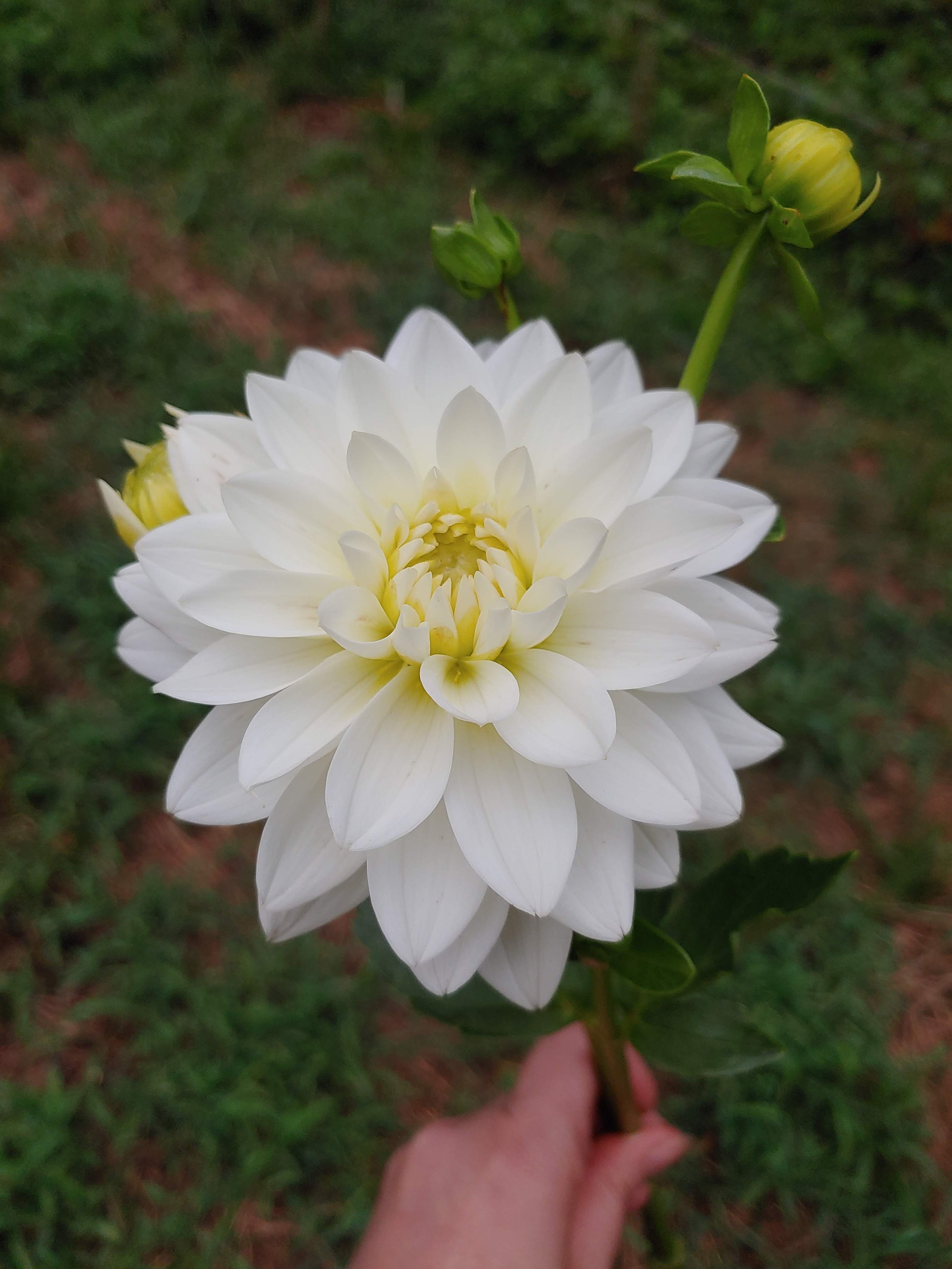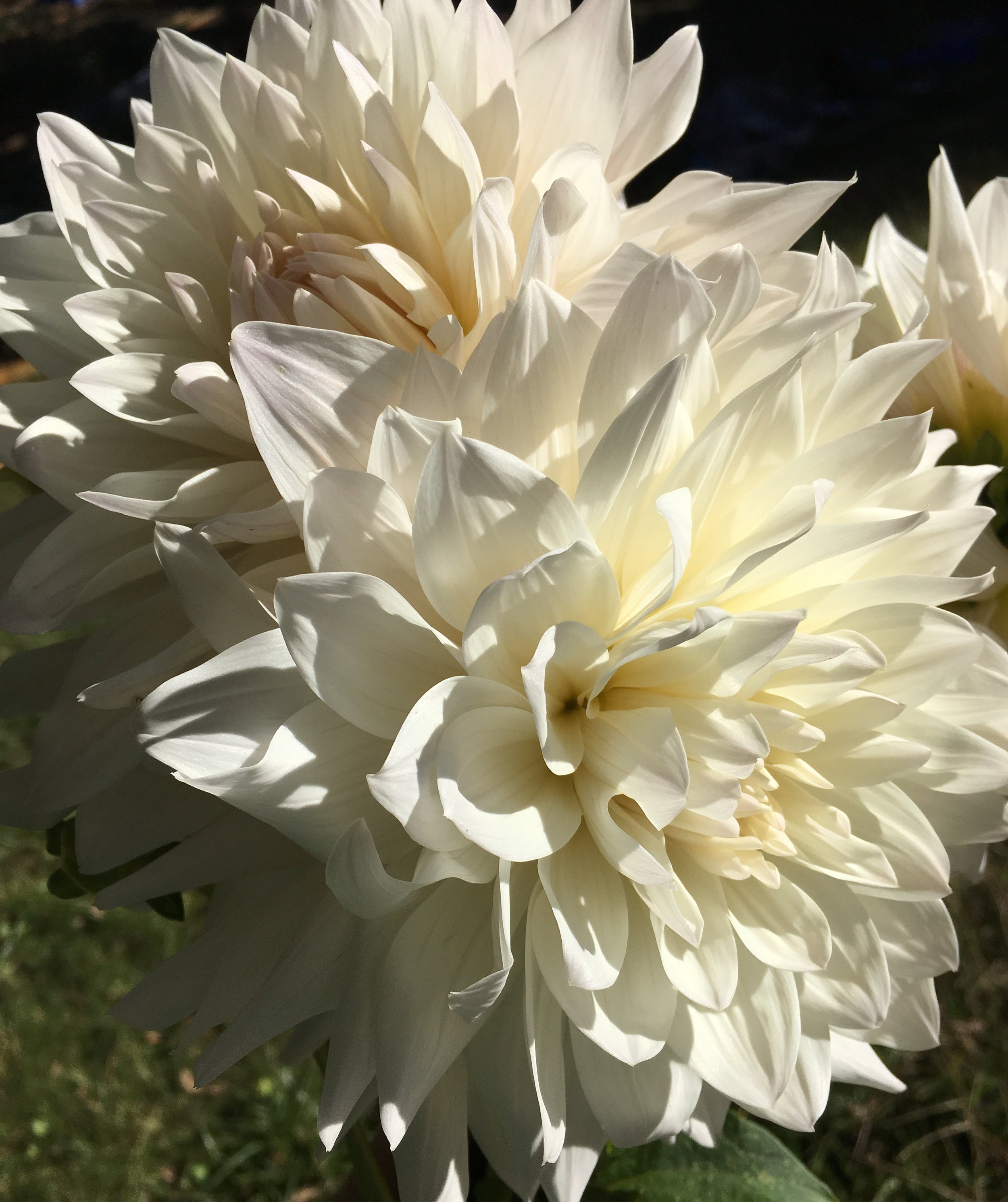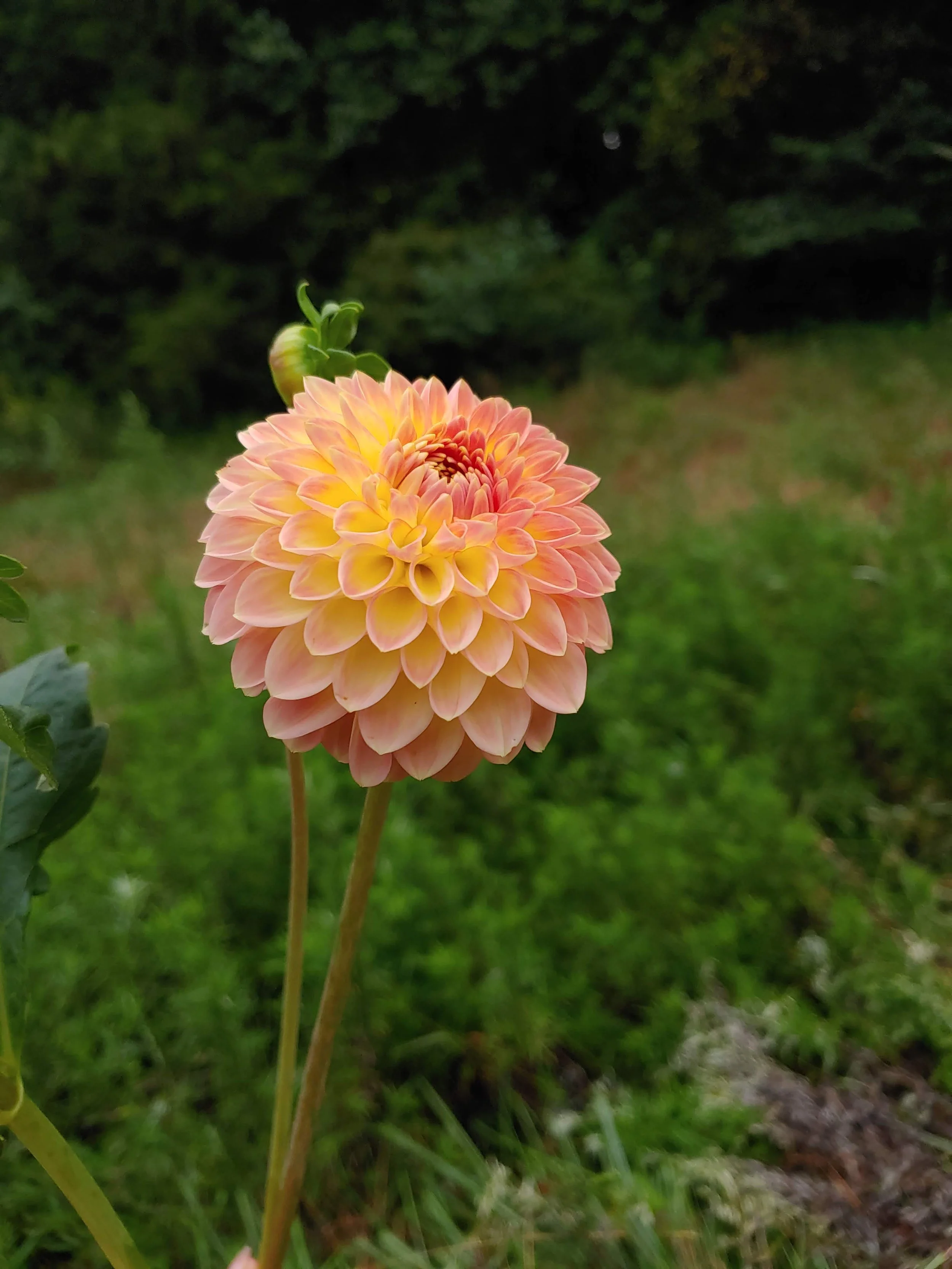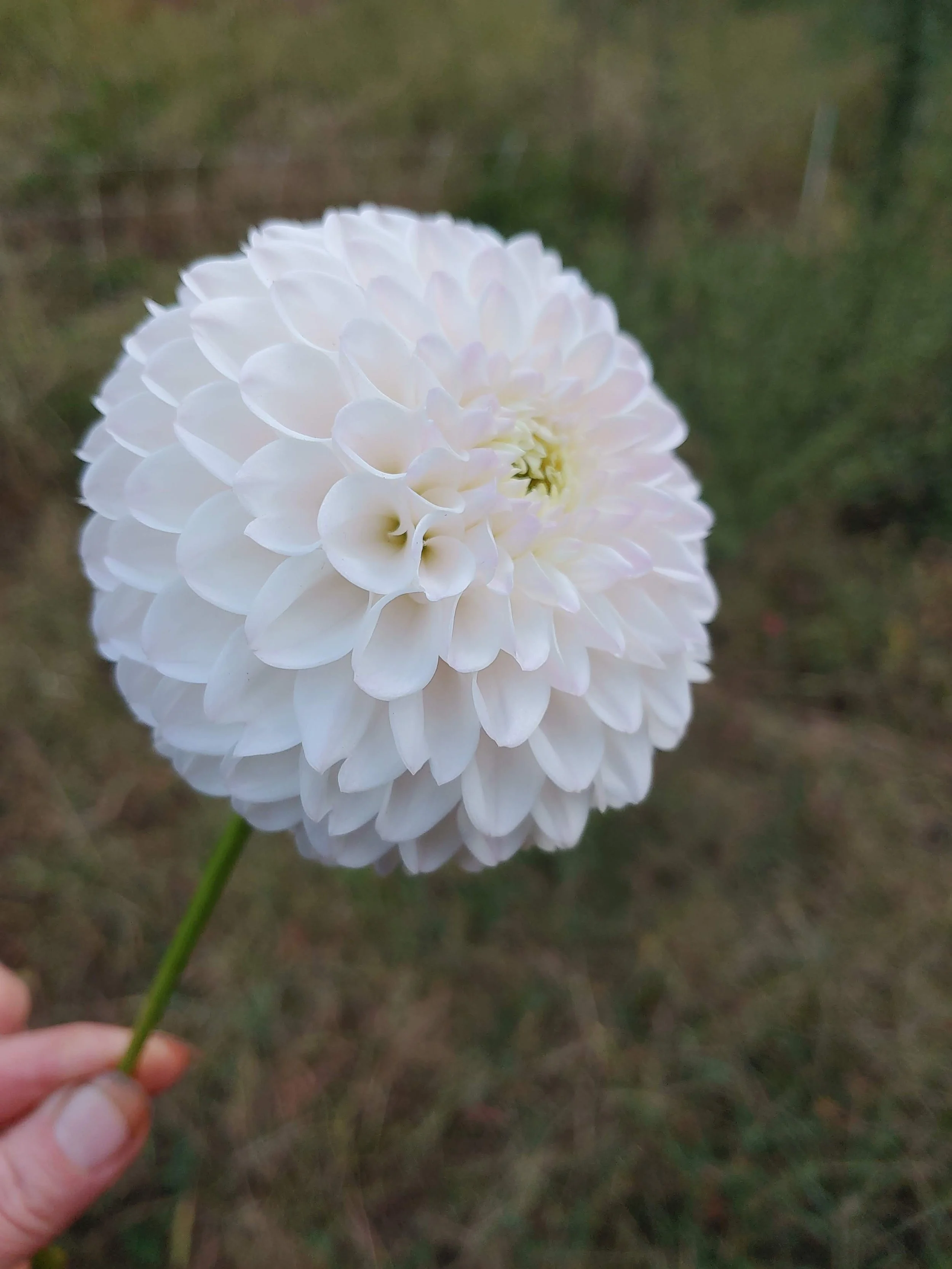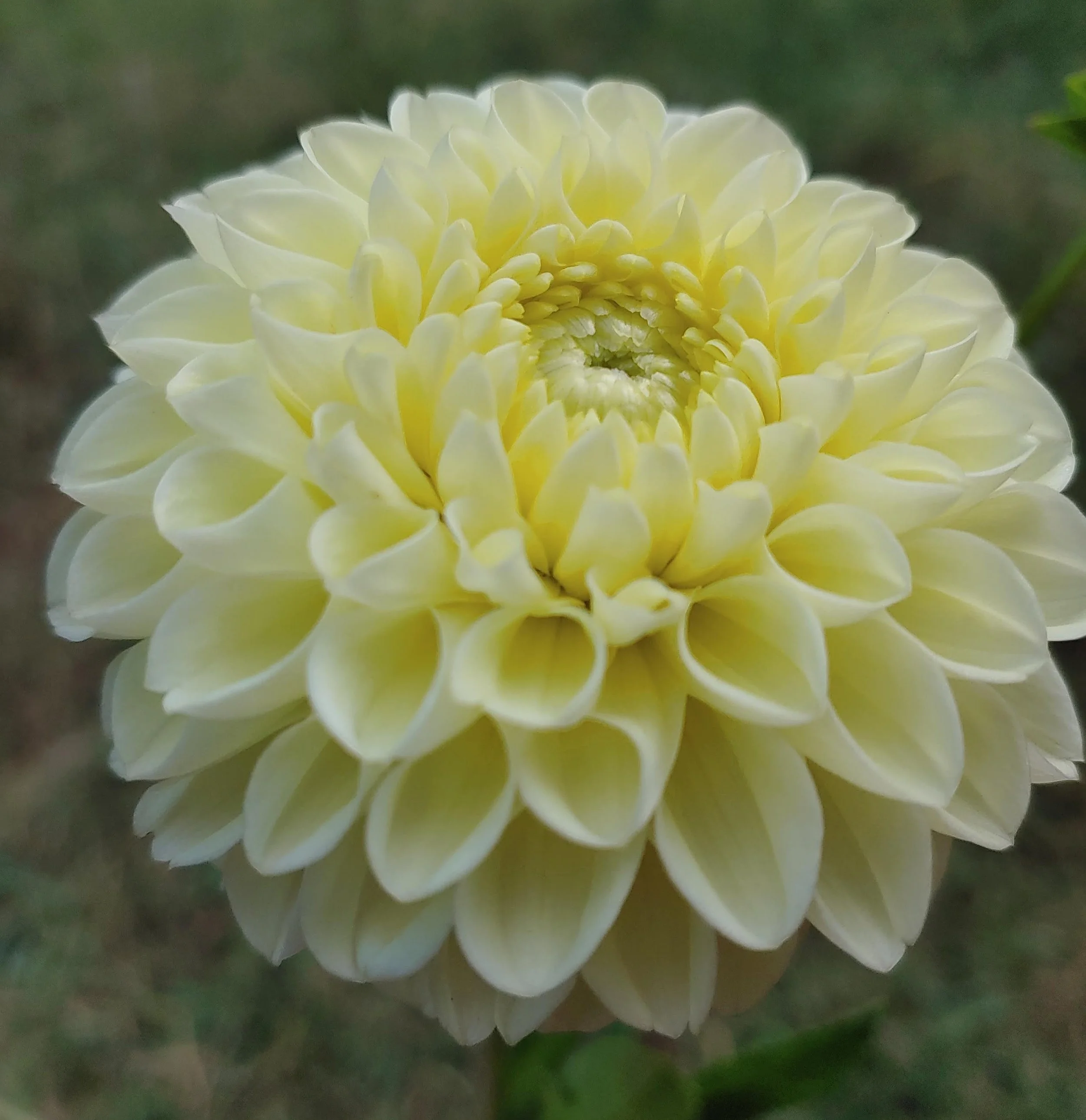
The Value of Doing Your Own Research
I’ve had this topic mulling around in my head for awhile but yesterday after having 2 conversations with other farmers (who grow in climates similar to mine) about what works for them and vice versa— Well it’s time to tackle this!
Researching how to fix things, how to do things has been a big part of former careers in my life. I’m a very self taught person— and I bet a lot of you are too. But if you are new to growing or figuring it out yourself doesn’t come naturally, I thought I’d share a few tips on how I research.
Research tips and tricks:
1. The old Google- you can always just type it in the search bar. But sometimes you don’t get the results you want. For example, if you want to know how to grow something- try this instead: “Flower Name Culture sheet” —So “Lisianthus Corelli Light Pink Culture Sheet” This phrase will bring up information from the breeder/producer of the seed. And usually you will get very detailed info because it’s coming from the people who are striving for optimum results so they can produce good seed. It’s also in their best interests for you to be successful so you buy more seeds.
2. Use Social Media as a search engine. Use the search bar on Facebook- you’ll find lots of groups- it’s the modern day forum. Remember to take first hand accounts lightly— always filter them through your growing zone. Instagram reels/videos can show you a lot of real world examples how people are growing crops innovatively. I like to find a hashtag on a crop and see if I can find a large scale producer. It’s interesting to see what they do to increase their efficiency.
3. Go back to the beginning- A few years ago I heard a talk about woody crops- I’d actually heard the same speaker give this talk multiple times. But this time- I heard it. My grower knowledge was at the maturity point for me to absorb it. Often times, we aren’t quite ready for something and it takes some real world experience for it to sink in. Don’t dismiss something just because you’ve heard it before.
4. Follow the rabbit trails- Click a link and another link and so on. Sometimes you gotta dig deep or latch on to a phrase/concept and investigate it further to find the information you need. Go on back to the second and third page of Google. There’s good stuff there- it’s just didn’t make it to page one more likely because the author didn’t know how to optimize their info to show up higher in search results. Doesn’t make the info any less valuable.
5. Join professional organizations- Association of Specialty Cut Flower Growers (ASCFG) is the best there is for cut flowers. The wealth of information on their website and in their growers minds is worth many times what a subscription will cost you.
6. Ask others- I highly value figuring it out myself but sometimes, you gotta ask for help. But make sure you are well researched first. Don’t ask out of laziness- that’s a pet peeve of mine. Growers who would rather someone just tell them instead of figuring it out themselves. You only cheat yourself if you don’t research your own answers.
7. Conduct your own trials and tests- Testing different crops, dahlia varieties, climate extension trials, etc. These are some of the reasons I’m still growing. I gotta admit- testing ideas and pushing the envelope are one of my favorite parts of farming.
I’ve never talked much about my ranunculus crop of 2020 (there were slightly more important things going on). But it was simultaneously the best and worst crop I’ve ever had. I had several things happen in my life outside the farm in fall of 2019 that threw me for a loop and distracted me from farming. The result was some majorly late planted crops, coupled with some flooding rains all winter and well— Let’s just say that crop was not so hot. But! I learned so much through all the mistakes and climate issues I had to deal with that year. I saw what was really possible with ranunculus- where you could push it and what was too much. So the learning experience made it one of my best crops ever. Fortunately no one really noticed all that much, way more important things going on.
This was an accidental trial/test but it was still sooo helpful. Each year, I try to see how I can push the boundaries of a crop or my climate- You learn so much! Don’t be afraid to test things— make it a regular part of your growing season. That first hand experience is worth way more than anything you’ll read or hear second hand.
Just a few things I’ve picked up along the way. Doing your own research yields so many wonderful results. It’s extremely fulfilling!
My Favorite White Dahlias for Hot Climates
Whenever a new flower farmer asks me what they should grow- I always say- “Grow white.” You can never have too many white flowers. And I must admit, I really like a white dahlia. There’s just something about a pure clean perfect white dahlia- velvet like petals, a bit of sparkly dahlia glitter!
I’ve grown a lot of white varieties over the years to find the ones that really produce here in my hot climate and I’d like to share some with you.
Blizzard
Blizzard- You probably knew I was going to say this one. She’s been gaining in popularity for years now. Highly prolific, strong stems, good tuber maker (easy to divide too)- perfect size for all types of design work. What’s not to like? Aptly named- If you look down a row of Blizzard blooms, it really does look like a bunch of snowballs on sticks!
Ryecroft Jan
Ryecroft Jan- the ubiquitous white ball dahlia. You can never go wrong with a white ball dahlia- it’s a perennial favorite among my florist customers. Tallish plant, very strong stems, 3ish inches in diameter (larger in cooler climates I believe) and reasonable tuber maker- they store well.
Karma Maarten de Zwaan
Karma Maarten De Zwaan- probably the most prolific decorative white dahlia that I know of! I get 3 strong flushes off this one in my climate (which does have a long growing season). The first flush can be a touch shorter than I like but I’ve learned to cut very deep into the plant. Then she’ll re-flush with taller stems. Strong but not thick stems- perfect for design work. Also the side buds will produce a decent sized flower if you miss the harvest window on the first bloom.
Her only downside is she’s a Karma. Karma dahlias were created a while back specifically for cut flower use and were patented. The patent doesn’t expire until 2026. This means you can’t propagate off your stock or resell it. I’ve been buying cuttings for years now - they work great! They are also available as clumps from tuber wholesalers and some re-sellers online.
Bridezilla
Bridezilla- I think this beauty was named to soothe bridezillas everywhere. There is nothing diva-ish about her. She’s white with a creamy center. In late season, if you let her really open up- the blooms become fluffy and peony like. She’s gorgeous! Medium height plant, 4-6” bloom, Good for a focal flower in design work.
Beaucon White
Beaucon White- She’s my favorite decorative style dahlia. Big enough to draw attention without being over-bearing. Lots of fluffy gorgeous layers to get lost in. Pretty much every brides dream white dahlia. Medium height plant, reasonably prolific for a larger bloom, great vase life!
Roque Starburst
Roque Starburst- I’ll give an honorable mention to this one. She’s fantastic, sadly I don’t have much need for lots of large dinnerplate sized white dahlias. But if you do- give her a try. She can have a slight blush in the center sometimes. Tall plant with strong stems and good vase life - especially for a dinnerplate.
If you are growing for cut flower production, I recommend growing a lot of the first 3- Blizzard, Ryecroft Jan and Karma Maarten De Zwaan. Those will serve you well. Then add in some Beaucon white and maybe a few Roque Starburst. You’ll have enough fluffy white dahlias to satisfy any bride!
Love posts like this? Sign up for the Dahlia Lovers Newsletter to be the first to know when we publish a new blog!
2022 Trial Results- Part 2: Good But Not For Me
Today we are continuing on with the 2022 trial results. I’ve grown so many varieties in the past 2 years that I’ve had to make some hard choices on what to keep. So today’s post is all about dahlias that are good but just aren’t for me- for various reasons as you will see!
****Remember you may love a lot of these dahlias and it’s not that I don’t like them — it’s just I can’t keep them all so I thought it might be interesting to some to see what I don’t like and why I’m not keeping it. Everybody has different goals with their dahlia growing. We are 95% a cut flower production farm with a side of dahlias that I keep in my “personal collection.”
Blyton Softer Gleam
Blyton Softer Gleam: I know this one is well loved by a lot of people but I just can’t get into her. She doesn’t often look like this picture. A lot of her blooms seem to show a hard yellow center and she’s not as productive as I like. Plus there are a lot of other dahlias that have a similar look so off to find one that’s more productive for me.
Bracken Sarah
Bracken Sarah: If she always looked like this, I’d keep her. But in my hot climate, she only has this look the last week or two of the season. She’s usually way more yellow than shown. Also she’s been a mid to late season bloomer the past two years. She might get a spot in my personal collection. But I think she’s more of a cool climate dahlia.
Hillcrest Suffusion
Hillcrest Suffusion: Once again- another variety that just doesn’t quite cut it for a hot climate. Unfortunately I don’t take a lot of pictures when the dahlias don’t look their best. But often, I get a hard yellow center on this one until the weather cools. There are also a lot of other coral dahlias so off to cooler climates she goes!
Maarn
Maarn: This is a good dahlia and I didn’t have any plans of cutting this one until I was shipped a mislabel by my wholesaler this spring. I ordered Pink Sylvia but was shipped Sylvia and by the time I realized it, Pink Sylvia was unavailable. Well I live in the land of lots of orange dahlias needed for sporting events so I decided to plant Sylvia anyways. And what do you know— I like it better than Maarn. Sylvia is a bit earlier, a little taller too. Productivity is about the same and if you put them side by side- you can’t tell much difference on the blooms. But I think I’ll give Sylvia a go for a few years.
Chilson’s Pride
Chilson’s Pride: I want to like this dahlia because she’s a good producer but she’s just so gosh darn it— Barbie Pink! She’s just too sugary sweet looking for me. Can’t get into her. It’s purely a taste thing on her- just not my thing. But if you like the look of her- go for it because she’s a great dahlia!
Golden Sceptor
Golden Scepter: I know this one is popular with a lot of people- that’s one reason I tried it. I’ve been trying to love it for 4 years now but it’s just not happening! It’s usually kinda’ messy looking and you have to cut it early to get a decent shape out of it. It’s also kinda’ small- If I could have it bigger and same color-that would be perfect! I also think it does better in a cooler climate. If you have recommendations for the same color but larger bloom, send them my way.
Hapet Perfekt
Hapet Perfekt- Being a cut flower production farm means we don’t grow a lot of the dinnerplate size dahlias. So to keep one, it’s has to be amazing. This one is reasonably productive and definitely has wow factor. But to be honest, I just wasn’t digging the yellow and pink tip look. Just didn’t overwhelm me.
Pink Pearl
Pink Pearl- Ok- I’m gonna say it: “I can’t stand this dahlia!” She annoyed me all season. Short growth habit and showed an open center for all but one week of the season. There was one week in the middle of September that she looked great but that was it. I think this one is definitely a cool climate beauty. I see pictures from farms north of here and she looks great. There are better options for blush dahlias in the South.
Polyventon Supreme
Polyventon Supreme: I’ve grown this dahlia on and off for years. I want to like her but she’s just a little too bright. I can’t sell the color. I need a softer yellow. But other than color- she’s great. Prolific, sturdy, makes great tubers, good size, good vase life. Kind of a shame but if you can sell that shade of yellow- go for it!
Wyn’s Ghostie
Wyn’s Ghostie: I chose this one to try for a new larger white dahlia but I think once again, it’s not a great hot climate dahlia. The center wouldn’t close up well for me. Maybe if it were harvested later but we tend to cut large dahlias on the tighter side because they get a better vase life that way. So if you live in a cooler climate and grow dahlias just for fun- this might be a keeper for you.
So there you have it- 10 varieties that didn’t make the cut. There will probably be more. I’ve got to whittle the collection further. Who didn’t make your cut this year? Let me know here!
Dahlia Tuber Sale happening soon— Make sure you are signed up for the Dahlia Lovers Newsletter for all the details!
2022 Trial Results- Part 1: The Fun Dahlias!
I’ve begun going through the 150+ dahlia varieties we grow. I’m picking and choosing which ones we will carry forward— And it’s not an easy task. I’ll write many posts like this over the winter because it takes a while to make all the decisions.
Today I want to share with you some of my “fun dahlias”. What makes a fun dahlia? Well, I run a production farm so most of what we grow has to be productive, growth habit that’s easy to cut and be in high demand with our florist clientele.
But there are so many dahlias out there and I love to explore so I always grow some just for fun! I also think these make some of the best varieties to really show off in a home garden too!
Here goes— in no particular order:
AC Paint
AC Paint- this one came as a substitute in an order. I wouldn’t normally order anything like this but maybe I should- everytime I turned around, it was blooming again. “AC” dahlias have had a history of doing well in my field so I should probably pay more attention. Definitely a good one for wow factor in a bouquet. Very tall plant so stake well!
BJ’s Dusty Rose
I got this one off a recommendation from my friend Lori at Broad River Blooms— it’s amazing! Great size— very medium sized so perfect for focal flower in a bouquet or arrangement and big enough to get noticed in the garden. Soft but enough going on that you notice her. Beefy plant, avg height 4ish’.
Bubbling Over
Bubbling Over- I gotta say— I love an eyeliner dahlia! I think the liner edge on petals is so cool! I wasn’t expecting this one to be so big. I have a bad habit of forgetting to check the size on a bloom when I’m shopping. Anybody else do that? The color on this is perfect for blending with others for a tropical sunset bouquet!
Scuar Swinton
Scaur Swinton- This one just has a fun name to say. I wish I had gotten a late season picture because she changes color to more coral/dk salmon. I actually like it better that way. Early season is pink with purple undertones. Useful color and size either way. Tall grower- stake well!
Renato Tozio
Renato Tozio- If you need a fluff ball of an orange, this one will do. I wasn’t sold on it at first- just another orange dahlia I thought. Then I gave it a day in the vase and it fluffed out and wow— it had some presence and began to steal the show! I think this one would make a great garden showpiece variety!
Hilltop Lost Treasure
Hilltop Lost Treasure- I’ve been growing this one on and off for a few years now. I think it’s here to stay. It fades so beautifully in the vase- a true joy to watch! So many fluffy layers too! 3-3.5’ feet so no major support issues either! I may take this one into larger production at some point. It’s a good one!
Brookside Cheri
Brookside Cheri- Another salmon peachy beauty. Very skinny petals for a dahlia- you don’t see that much but there are enough on it that she still looks full. Cut her on the tight side because she opens quickly in the field. She’ll still open in the vase.
Roque Starburst
Roque Starburst- I began growing this one years ago as part of my production varieties but sadly the demand for a 10” white dahlia just wasn’t there. But she’s a personal favorite of mine so I’ve kept a few plants around. Often she has a slight blushy center- pretty good vase life for a large dahlia too!
Hapet Champagne
Hapet Champagne- I wanted this one for years and finally got it last year. Second year and it’s even better than the first year! Decent number of blooms, great color and unique look with the lacinated petals (which I love!). There’s a good chance this one will go into production down the line!
Well there you have it- some of my “for fun” varieties that I’ve been testing for the past 2 years that I’ll be carrying forward!
Who did you try this year and love? Tell me about it here.
Dahlia Tuber Pre-Sale - Nov 18 12 PM EST - Sign up on our Dahlia Lovers Newsletter for a password to shop an hour early!
Inviting Pollinators into your Dahlia Garden
So I’ll be honest, dahlias aren’t the first flower to come to mind when I think of blooms to attract pollinators. Usually it’s salvias, nicotiana, alyssum, yarrow and wilder looking plants. However there are some types of dahlias that work really well as pollinator attracting plants.
Anemone and collarette types will bring the bees into your garden. For a plant to attract pollinators, having an open center is an easy access method for bees to find pollen. Anemone dahlias have a large fluffy center full of pollen. Collarettes also have an open center that’s easy access.
I’ve been experimenting this year and grew Sandia Brocade (Anemone type) in the middle of all my cut flower dahlias. I haven’t been harvesting it like a cut flower so every bud has been able to open. I’ve been deadheading after I see the bloom has been pollinated. I don’t want seed heads to form because I want it to keep blooming as long as possible so I just keep deadheading.
Sandia Brocade in my Dahlia Field
Sandia Brocade is really the first dahlia like this that I’ve grown. But I have to say - I’m hooked! I love watching the sleepy bees early in the morning. I’m going to start growing more- just for fun! These types don’t always make great cut flowers- their vase life is pretty short. But they are worth it for their pollinator attraction value!
I wanted to find more varieties that worked well in a hot climate so of course I turned to my dahlia sister- Lori of Broad River Blooms. I know she loves these types and has grown a lot of them. Huge thank you to her for sharing some of her favorites! (She sells tubers of these too— sign up for her tuber sale email here.)
Platinum Blonde- Anemone type (Photo by Lori at Broad River Blooms)
Waltzing Matilda- (Photo by Lori at Broad River Blooms) Look at that color!!
Bloomquist Golden (Photo by Lori at Broad River Blooms) Non stop bloomer!
Dad’s Favorite (Photo by Lori at Broad River Blooms) Excellent Butterfly attractor
Claire De Lune (Photo by Lori at Broad River Blooms) I think this one is my favorite and is going on my must have list for next year!
I’m definitely making plans for more of these next year! I can’t wait to see all the beautiful pollinators they attract. I’ll be hitting up Lori’s tuber sale for sure!
Names from left to right: Bloomquist Sweet, Asahi Chohji, Ferncliff Dolly, April Heather, Pooh


